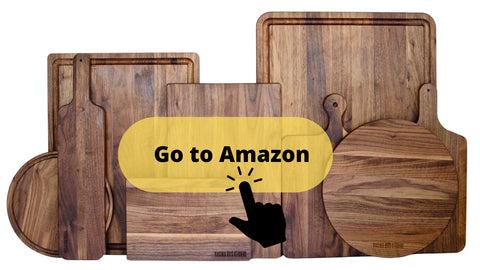What Makes a Quality Chef Knife?
The chef’s knife is one of the most versatile and useful tools in the whole kitchen, therefore, it must be chosen with precision.
Now, unless you are familiar with using quality knives in the kitchen for many years, you will need some background on exactly what makes a quality chef knife, so that you don’t end up wasting money on something that’s just not good enough.
Comfort
In order to efficiently cut vegetables, fruits, and meat with a chef’s knife, the comfort you feel while holding the knife in your hands is extremely important. Ideally, the knife should feel like an extension of the hand that you are holding it in, rather than a separate tool.
See if the weight and the balance feel right, or if it makes you feel awkward while holding it. Once you have found something that feels well balanced and comfortable to work with, only then is it time to move on to the next step.
As it depends on the size of the person using the knife as well, feel free to choose something smaller or bigger than the norm, if that’s what feels right to you.
Blade Size
The blade on a chef’s knife comes primarily in three sizes, namely six-inch, eight-inch, and 10-inch, but there could be other variants as well. The most reliable size when it comes to the chef’s knife happens to be the eight-inch blade.
It isn’t as intimidatingly big as the 10-inch blade is, nor is it as limited in functionality as the six-inch blade. There’s no harm in having all three, but when you are starting out, the eight-inch chef’s knife is the right choice.
Handle
The handle is a big part of the comfort factor, which we discussed earlier, but the importance of the handle is such that it deserves a separate mention as well. Go through the following to know what makes a good handle for a chef’s knife.
- It should preferably be made from walnut wood because it provides a safe and secure grip
- Ample clearance under the handle ensures that your knuckles are not getting banged on the surface while chopping
- The gripping grooves should feel natural; if it feels unnatural, it’s not the right chef knife for you
Bolster
A chef’s knife may or may not have a bolster, depending on the style in which it has been made, as Japanese chef knives do not have any bolster at all. However, having at least a bit of bolster is highly recommended because it serves the following purposes.
- It adds stability to the whole knife
- The bolster makes the knife feel stronger
- The user’s fingers remain better protected
Always remember that the more efficient the bolster implementation is, the less should you feel the need to grip the knife tightly.
Heel
The heel is the heftiest and broadest part of the knife’s edge and finding a good heel is tricky business. A lot depends on how it actually feels in the hand than anything else, but it shouldn’t feel like the blade is trying to go back while you exert pressure. If that happens, then the heel is too curved to be of good use.
Spine
The reverse edge or blunt edge of the blade needs to be perfect as well in a quality chef knife, so look for the following characteristics on the spine.
- Square, smooth and polished edges are indications of a well-made product
- It should be tapered to make the tip comparatively sharper
Edge
Finally, we come to the business end of the chef’s knife and, quite simply put, the edge of the chef’s knife needs to be as sharp as it possibly can be. Chop a few fruits, vegetables, and maybe even slice a thin piece of paper to test just how sharp it really is. You want a US-manufactured blade that has been made from 420HC high carbon stainless steel and preferably laser-cut for precision.
Wrap Up
These were just a few things to look for when choosing a good knife. If you are looking for a new one for your kitchen then make sure to check out our selection of chef knives to learn more.
See Virginia Boys Kitchens On Amazon
We are on Amazon, see our storefront here. Use coupon code VBKBLOG10 for 10% off your entire purchase of any Virginia Boys Kitchens on Amazon. Apply the code at checkout.


